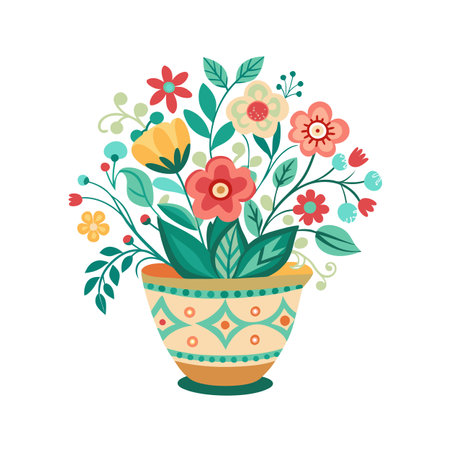Understanding Light and Space in British Homes
If you’ve ever lived in a typical UK flat or terrace, you’ll know just how precious every bit of space – and sunlight – can be. British homes, especially those in cities or older neighbourhoods, often come with modest room sizes and limited outdoor areas. Windows might face narrow streets or shaded courtyards, meaning natural light can be at a premium. This unique blend of constraints shapes not only the atmosphere indoors but also your approach to choosing and arranging plants.
The often overcast British weather further influences these choices. Unlike sunnier climates where bold, sun-loving blooms thrive, here we must consider plants that are happy with indirect or dappled light. When selecting colours and textures for small spaces, it’s important to balance vibrancy with subtlety; too many dark greens or dense foliage can make a room feel cramped, while lighter shades and varied leaf shapes help bounce what daylight there is around the space. In essence, understanding your home’s lighting quirks and spatial limits lays the groundwork for plant combinations that truly brighten up even the smallest nooks.
2. Selecting Plants for Year-round Colour
If you want to make the most of a small garden in Britain, it’s wise to plan for colour and texture that last through all four seasons. While space may be at a premium, that doesn’t mean you must sacrifice vibrancy or interest during the quieter months. By carefully choosing plants known for their reliable blooms and striking foliage, you can keep your outdoor nook lively no matter the weather.
British Favourites for Every Season
Start with classics like hellebores, which provide rich winter and early spring flowers, or primroses, whose cheerful faces brighten up borders as soon as the frost lifts. When summer comes round, lavender not only brings a soothing scent but also attracts pollinators, while its silvery foliage remains appealing even after flowering finishes. Autumn sees a turn towards plants such as heucheras, with their bold leaf colours, and sedums, which hold their flowerheads well into winter.
Choosing by Seasonal Interest
| Season | Top Plant Choice | Main Feature |
|---|---|---|
| Winter | Hellebore (Christmas Rose) | Elegant blooms in frosty months |
| Spring | Primrose (Primula vulgaris) | Bright, early flowers in pastel shades |
| Summer | Lavender (Lavandula angustifolia) | Scented purple spikes; evergreen foliage |
| Autumn | Heuchera & Sedum | Burgundy leaves; lasting seed heads and late colour |
A Practical Tip from Experience
I’ve found over the years that mixing these hardy British favourites not only guarantees year-round appeal but also makes maintenance simpler—each plant tends to thrive with minimal fuss if given its preferred spot. Remember to group by sun or shade preference and consider height differences so every plant gets its moment to shine. With thoughtful selection, even the tiniest garden corner can feel full of life across the seasons.

3. Creating Texture: Mixing Leaf Shapes and Finishes
If you want to breathe life into a small British garden or balcony, paying attention to the texture of your plants is just as important as choosing the right colours. Combining different leaf shapes and finishes can give your space a real sense of depth and character—without making it feel overcrowded or cluttered.
For example, consider pairing the soft, velvety foliage of lamb’s ear (Stachys byzantina) with the bold, glossy leaves of hostas. The contrast between the two is not only visually appealing but also invites touch, adding a tactile dimension that draws people in. This sort of juxtaposition works beautifully in pots near a seating area or along a narrow path where space is at a premium.
Layering for Impact
The trick is to layer your plants thoughtfully. Use upright, spiky grasses like Carex or Festuca to provide vertical interest behind lower-growing, spreading varieties. Tuck in trailing ivy or ferns at the edges for softness. Avoid cramming too many large-leaved specimens together; instead, let each plant have room to shine by mixing fine-textured foliage (like that of Japanese forest grass) with broader-leaved companions.
The British Touch: Classic Pairings
Classic British gardens often feature combinations such as leathery bergenias with feathery astilbes, or silver-leaved artemisia next to evergreen box balls. These time-honoured pairings show how contrasting textures can create harmony rather than chaos—even in a confined spot.
Practical Tips from Experience
Having tended many small city gardens over the years, I’ve learnt that it pays to step back and view your space from different angles before planting. Place your plants while they’re still in their pots so you can shuffle them about until you achieve a pleasing mix. Remember, less is more: resist the urge to fill every inch. Instead, let negative space highlight the unique textures you’ve chosen.
With careful selection and placement, you’ll find that mixing leaf shapes and finishes not only enlivens your small space but also offers year-round interest—a true hallmark of an inviting British garden.
4. Layering Colour in Pots and Beds
Creating vibrant displays in small spaces is a bit like arranging a classic English trifle – the secret lies in clever layering. Whether you’re working with containers on a balcony or a narrow border along your garden path, the trick is to combine plants of different heights, habits, and hues for a lush effect that belies the modest footprint. Start with your backdrop: use upright plants, such as foxgloves or salvias, to add vertical interest. They give structure and draw the eye upwards, making even the smallest plot feel more spacious.
Next, bring in mid-height fillers. Think of hardy geraniums, dwarf dahlias, or cheerful marigolds – these provide a bridge between your tall backbone and the lower level. For a true British touch, don’t forget trailing greenery and cascading blooms at the front or edges of pots and beds. Varieties like ivy, lobelia, or trailing petunias spill beautifully over sides, softening hard lines and adding movement.
Practical Plant Layering Ideas
| Layer | Suggested Plants | Purpose |
|---|---|---|
| Upright (Back) | Foxglove, Salvia, Snapdragons | Add height and focal points |
| Mid-layer (Middle) | Dwarf Dahlia, Hardy Geranium, Marigold | Bridge heights and add density |
| Trailing (Front/Edge) | Lobelia, Ivy, Petunia | Soften edges and create flow |
Tips from Experience
If you’re planting up pots, always start with good drainage – nothing ruins a display faster than soggy roots! Use multipurpose compost mixed with a bit of horticultural grit. When arranging your plants, odd numbers often look best: plant in threes or fives for a natural appearance. Don’t be afraid to experiment with colour combinations; rich purples with golden yellows or soft pastels with bold reds can really lift a space. And remember – annuals are your friends for quick bursts of brightness. Pop them in wherever you see a gap for instant cheer.
5. Using Local Features and Materials
If you’re keen to give your small garden a true sense of place, there’s much to be said for making use of traditional British materials. These time-honoured elements—think terracotta pots, old stone troughs, or even a path lined with reclaimed bricks—have a knack for tying vibrant planting schemes together and lending any corner an unmistakably homely feel.
Terracotta Pots: Warmth and Character
There’s something about the rich, earthy tones of terracotta that just works in our unpredictable British weather. Not only do these pots set off lush greens and bold flowers beautifully, but they also age gracefully, developing a soft patina over time. Pop in some trailing lobelia or a cheerful mix of petunias, and you’ll have a display brimming with colour and old-world charm.
Stone Troughs: Rugged Elegance
If you can get your hands on a proper stone trough—even a small one—it’s worth its weight in gold for adding texture and gravitas. Fill it with alpines or succulents for a low-maintenance showstopper, or use it as a rustic base for pastel violas and silvery thyme. The natural variation in the stone provides the perfect counterpoint to both delicate foliage and bold blooms.
Reclaimed Bricks: History Beneath Your Feet
For paths, raised beds or even edging, reclaimed bricks tell their own story. Their weathered reds and oranges pick up the tones of surrounding plants and pots, subtly unifying your space. Set them herringbone-style for traditional appeal or stack them loosely for a cottage-garden touch—the trick is not to aim for perfection, but rather to let each brick’s unique character shine through.
By weaving local materials into your scheme, you not only celebrate British gardening heritage but also create a backdrop where colours and textures really come alive. It’s this marriage of the old and new—vivid plants against timeless features—that gives even the smallest garden patch its own distinct personality.
6. Tips for Maintenance in Compact Spaces
Keeping a small garden vibrant and inviting doesn’t need to be a chore, especially when you embrace a few practical habits passed down through generations of British gardeners.
Choose Low-Maintenance Varieties
In compact urban spaces, select plants that offer long-lasting colour and texture with minimal fuss. Hardy perennials like geraniums, lavender, or heucheras are not only attractive but also require little attention once established. Don’t overlook evergreen shrubs such as box or euonymus, which provide year-round structure and reduce the need for seasonal replanting.
Make Mulch Your Friend
A good layer of mulch – whether bark chips, gravel, or leaf mould – helps lock in moisture, suppress weeds, and lends an ordered look to beds and pots. This traditional trick is especially handy in smaller spaces where every inch counts and frequent watering isn’t always practical.
Regular Deadheading
To keep your colourful combinations looking fresh, make a habit of deadheading spent blooms. Just a quick weekly round with the secateurs encourages more flowers and keeps things tidy without much effort. Even a short stroll around your patch with a cuppa can double as garden maintenance.
Embrace Containers and Raised Beds
Pots, troughs, and raised beds are perfect for small spaces. Not only do they help control soil quality and drainage, but they also make it easier to access your plants for pruning or tidying up. Mix trailing varieties with upright growers to maximise both colour and texture without overcrowding.
A Little Routine Goes a Long Way
Just ten minutes here and there – pulling out the odd weed, topping up mulch, or pinching back leggy stems – will keep your urban oasis looking its best all season long. Remember: the most successful small gardens aren’t about endless labour but about working smarter with what you have. With these simple pointers, even the busiest Londoner can enjoy a lush, lively space bursting with charm and character.


